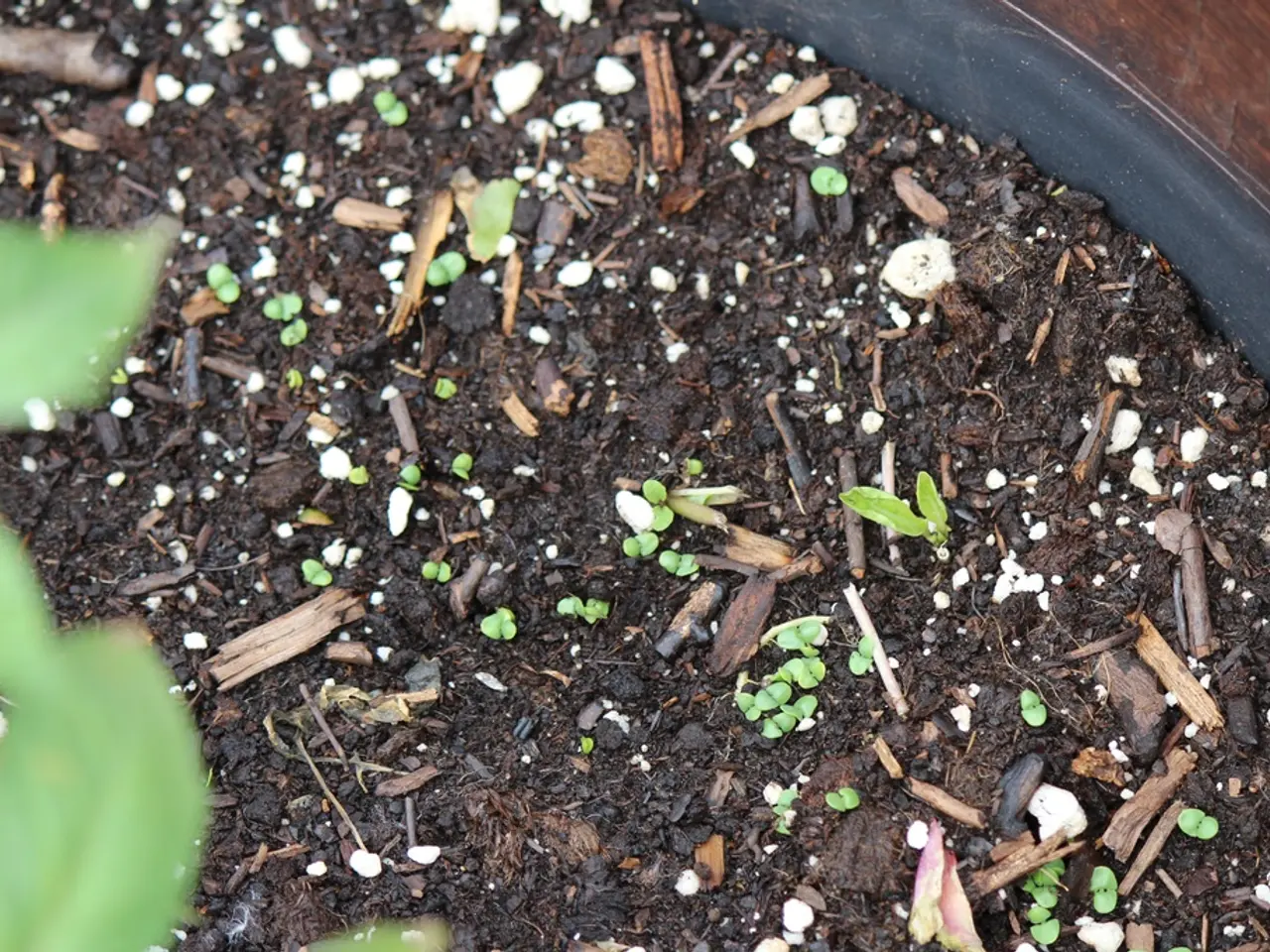Exploring Soil Densification: plant influence and advantages
Soil compaction, a common issue in gardens and agricultural lands, can have detrimental effects on plant growth and soil health. But fear not, for there are effective strategies to address this problem.
By amending the soil with organic materials like compost, peat moss, or worm castings, you can help loosen the soil, improve drainage, and provide nutrients for plants. To fix soil compaction, methods include aerating the soil, amending it with organic matter, and employing sub-surface soil sculpting or deep plowing.
In general, aeration—mechanically perforating the soil to alleviate compaction and improve oxygen and water penetration—is a common solution for lawns and garden soils. Adding organic matter enriches soil structure by fostering aggregation, improving porosity, and stimulating biological activity to counter compaction. Establishing deep-rooted plants, such as certain cover crops, can naturally break up compacted layers over time, enhancing soil porosity and nutrient cycling.
The strategies for fixing soil compaction depend on the soil type and climate conditions. For instance, clay soils benefit from organic amendments, cover cropping with deep-rooted species, and reduced tillage, while sandy soils require cover crops to reduce erosion and add organic matter, and regular mulching to maintain moisture retention. Loam soils respond well to a balanced combination of aeration, organic matter addition, and crop rotation.
In wet or rainfed regions, cover crops like winter rye can maintain soil moisture and prevent compaction by protecting the soil surface from erosion and enhancing organic content. In dry or arid climates, drought-tolerant cover crops and mulch can help conserve water and organic matter. In temperate climates, no-till or reduced tillage practices combined with cover cropping maintain soil health and prevent compaction by preserving soil structure and microbial life.
For construction or engineering projects, compaction is often intentional but must be carefully controlled using methods like vibratory rollers, tamping, or roller compaction to achieve desired soil density. Monitoring compaction through in-situ density tests and maintaining compaction records ensures soil is neither under- nor over-compacted, preventing future issues like poor drainage or structural instability.
For small-scale soils like lawns with bare spots, loosening the soil by raking before reseeding and adding compost or worm castings can improve soil properties naturally. Using organic grass seed blends combined with organic mulch can restore soil health in compacted patches.
In severely compacted soils, large amounts of compost (up to 50% of the existing soil by weight for clay soils) may be necessary to improve the soil structure. Proper drainage systems, like tile drains or French drains, can address poor drainage and reduce soil aeration issues.
Preventing soil compaction involves avoiding working with moist soil, minimizing foot traffic, and incorporating organic matter like compost to improve soil structure and promote pore space. Rotating crops with varying root structures and depths can alleviate soil compaction and improve soil aeration. Implementing controlled traffic patterns helps minimize soil compaction by defining pathways for machinery and foot traffic. Cover crops can help prevent soil compaction and improve soil health by protecting the soil from the impact of raindrops and foot traffic.
A garden tool called a core aerator can be used to remove small plugs of soil and alleviate compaction. Heavy machinery, foot traffic, and natural processes can cause soil compaction. Soil compaction can be caused by heavy machinery and foot traffic, animal grazing, poor tillage practices, soil composition, and natural forces like rainfall.
In conclusion, addressing soil compaction effectively requires a multi-faceted approach that combines mechanical, biological, and organic amendments. By adhering to these guidelines, you can improve soil health, plant growth, and land productivity across different soils and climates.
By incorporating organic amendments like compost, peat moss, or worm castings into your gardening practices, you can promote soil health and improve the structure of your home-and-garden soil. Aerating the soil using a core aerator can help alleviate compacted areas, while adding deep-rooted plants or cover crops can naturally break up soil over time. Adopting a lifestyle that minimizes foot traffic and employs controlled traffic patterns can also be beneficial for maintaining soil health in environmental-science and gardening contexts.




